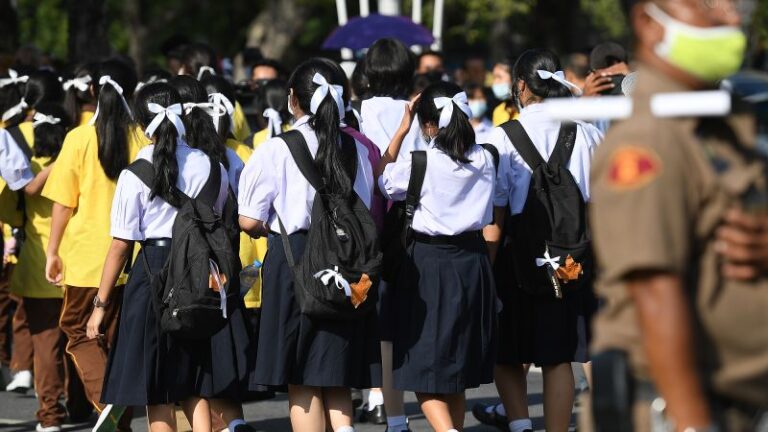Transformation of School Hair Regulations in Thailand: A Reflection of Change
Bangkok, Thailand — CNN
The Daily Ritual at Bangkok Schools
Amidst the early morning chill, students in matching uniforms gather by their high school’s flagpole in Bangkok, ready for the day’s rituals. Among them stands eighth grader Baramee Chaovawanich, known as “Khao Klong.” This daily assembly sees teachers inspecting students, ensuring compliance with a strict dress code that has long been a hallmark of Thai schools.
Punishment and Its Aftermath
During one such inspection, Khao Klong found himself in an uncomfortable position when a teacher criticized his hair length. The result was a public shaving, leaving him humiliated and exposed to the laughter of his peers. “There was a feeling of shame, like being isolated and made a joke of,” Khao Klong recalled, reflecting on how this experience led to lasting insecurity.
Strictures of Hair Regulations
For years, Thailand’s educational institutions have enforced rigid hair regulations, demanding adherence to army-style cuts for boys and strict bobs for girls. Although these rules were relaxed in 2013, allowing boys a slightly longer style and girls more freedom with tied hair, compliance remained a challenge, as Khao Klong learned firsthand when even a few centimeters over the limit invoked discipline.
Legal Landmark: Court Ruling on Personal Freedoms
In recent developments, a ruling by Thailand’s highest administrative court has rejected the outdated hairstyle regulations, declaring them unconstitutional. The court highlighted the excessive nature of these restrictions as violations of personal freedom, emphasizing their detrimental effects on children’s mental health, particularly those with diverse gender identities.
Students Speak Out: A New Era of Expression
The court’s decision has sparked joy among students, previously stifled by rigid guidelines. “Things have changed, especially concerning how they checked hairstyles,” remarked Nijchaya Kraisriwattana, a 16-year-old student. The atmosphere was one of cautious optimism, though concerns remain that some institutions may cling to outdated punitive measures.
Historical Context: The Influence of Military Culture
The rigidity in school dress codes reflects Thailand’s conservative, hierarchical society shaped by years of authoritarian governance. The dress code regulations originated from a military government’s decree decades ago, reinforcing ideals of conformity and discipline to cultivate “responsible citizens.” This military-style education system has shaped students’ experiences, including harsh disciplinary practices.
The Rise of Student Activism
The past few years have seen a surge in student activism, especially during the 2020 pro-democracy protests, where demands for change extended to educational reforms. Khao Klong and others began advocating against oppressive regulations, leading to significant actions such as filing petitions demanding the repeal of restrictive dress codes. Their resolve contributed to the eventual relaxation of hair regulations, marking a step toward freedom of expression in schools.
